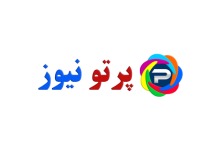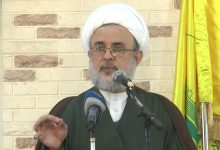The latest status of the construction of 5 petrorefineries / export of 3 million items of Iranian goods to offshore refineries

Jalil Salari, CEO of the National Oil Products Refining and Distribution Company, in an interview with the economic reporter of Fars News Agency, referring to the actions of this company in the field of advancing refining and petro-refining projects and upgrading the current refineries last year, said: meetings with shareholders and CEOs of refining companies in the country We organized and tasked them to formulate and implement a comprehensive plan to stabilize the capacity along with improving the quality of the manufactured products. The trend of crude oil production in the country is towards the production of heavy crude oil, as a result, we also considered plans in the field of reducing production and improving the quality of fuel oil production.
He added: The construction of refining units under the master plan required obtaining a license, which was met with the help of the Oil Industry Research Institute, knowledge-based companies, and foreign sources. In the field of financing projects, we also mandated that some refineries allocate 30% of their refining profit to these projects.
Salari said: In the budget law of 1402, the government’s proposal was also approved by the parliament that 40% of the refining profits be allocated to the implementation of refineries’ quality improvement projects, and in parallel, the quality index of the products is also taken into consideration, and depending on the level of the refineries’ commitment to quality improvement, A 5% discount is offered on their food. These legal duties are for the benefit of the shareholders themselves in the long run.
The CEO of the National Refining and Broadcasting Company said: Along with the upgrading and quality improvement projects of the current refineries, we also put the construction of new refineries and petrorefineries on the agenda. There were projects in the past that we analyzed. For example, one of these projects was the Mehr Gulf project, which had problems in the provision of ancillary services, land, connection to the pipeline network, etc. with the Persian Gulf Star Refinery. By the grace of God, these problems were resolved with the follow-up, so that the Persian Gulf seal project can continue to progress at a higher speed.
He explained: There were some refining plans with crude oil feed from the past, which needed to be provided with a license for their feed or their design model should be directed to the petrorefineries, which was also done. Khuzestan Refinery and Shahid Soleimani (former Hormuz) were among these projects.
* The latest status of the two strategic plans of the Tabesh and Pars pipelines
Salari emphasized: In addition to the projects to increase fuel production, it was necessary to pay attention to downstream projects such as storage and development of the product transmission line network for fuel distribution, because consumption growth has already occurred in the country, but in the south of the country, infrastructure has been created. Was not. Therefore, shifting from the production pole in the south to the consumption pole in the center and the north was one of the other priorities that were discussed.
The CEO of the National Refining and Broadcasting Company said: The increase in fuel consumption in the country would increase the cost of fuel transportation for the National Refining and Broadcasting Company, so we followed the idea of changing the transmission pattern to reduce costs. In this regard, the construction of two product transfer pipelines was defined according to the existing bottlenecks.
He continued: The radiation pipeline was one of these lines that is important for the country from the defense and economic aspects. The construction route of this pipeline is to transfer oil products from Rafsanjan to Mashhad and it passes through the three provinces of Kerman, South Khorasan and Razavi Khorasan with a length of 948 km.
Salari stated: Currently, most of the fuel produced from the south to the north of the country passes through Tehran, but in this project, the fuel transfer distance has been reduced by 500 to 600 km in order to supply the fuel needed in the northeast of the country. With the use of this plan, the need for around 1500 oil tankers to transport fuel will be eliminated.
The CEO of the National Refining and Broadcasting Company said: “Since the beginning of the revolution, we have never had a product transfer pipeline in Fars province, and no attention was paid to this issue.” In this way, we defined the pipeline project for the transfer of Pars oil products in that region, which will transfer 12 million liters of oil products daily from Mehararan to Shiraz.
He added: Using the pipeline as an alternative to road transportation and increasing the share of product transportation through the pipeline, reducing road traffic, as a result of reducing fuel consumption, saving and reducing operating costs (both road and pipelines) and reducing risks. Road and environmental protection are among the advantages of the Pars pipeline project.
Salari said: the routing studies of these pipelines have been done and some environmental permits have also been obtained. Now we are in the stage of meeting with investors to advance the work in the form of EPCF contract. We hope that the implementation process of these projects will start in the first three months of 1402.
The CEO of the National Refining and Broadcasting Company, in response to a Fars news reporter’s question about the financing of the Tabash project with Russian investment, said: We welcome the presence of all investors in the projects of the country’s refining industry, and we are looking for a solution to bring all interested groups into the work. , but regarding your question, A report from Sina Energy-Gaster Holding has not yet been submitted about the financing method of the Tabesh project, and I am not aware of the fate of the company’s memorandum with a Russian company to finance this project. However, these two pipeline projects will be started with internal sources, both banking and non-banking.

* Executive operations of Shahid Soleimani Petrorefinery will start in April 1402
Referring to the latest status of Shahid Soleimani Petrorefinery, he said: Feasibility studies of this refinery have been done, initially, a series of banks took action to finance this project, and we went in the direction of creating a partnership letter and appointing a company to build this unit. Register and start the implementation process.
Salari added: In this way, banks needed to obtain a series of licenses, which was a time-consuming process. Thus, we decided to start the implementation of this project faster by appointing an executor. In this way, the project became a plan and before the company was registered, we chose a plan executive to start the executive operation with the powers he has.
The CEO of the National Refining and Broadcasting Company said: This is a common practice that after the study work is done, a project is first started by the project manager, its implementation is started and then it is transferred to the company. We chose this path because this project will not be delayed in obtaining permits and its implementation will start faster.
He emphasized: During this period, the issue of land and environmental permit of the Shahid Soleimani Petrorefinery project was determined. We also took action to obtain a license from the Economic Council, which was on the agenda this month, but it is likely that this license will be obtained at the beginning of April next year.
Salari stated: The executive operation of Shahid Soleimani Petrorefinery is defined in 4 phases, one phase includes the construction of utilities, two phases include the construction of process units, and one phase is for the construction of a petrochemical unit.
The CEO of National Refining and Distribution Company said: We are trying to start operational operations of Shahid Soleimani Petrorefinery with a capacity of 300,000 barrels of heavy crude oil and with an investment of more than 10 billion dollars in April 1402. 70% of the products of this unit are fuel and 30% are chemical products.

* The latest status of 4 oil refineries Mehr Persian Gulf, South Adish, Khuzestan and Marvarid Makran
He explained about the status of other refining projects: Considering the solution to the problems of Mehr Gulf Refinery (with a capacity of 120,000 barrels of gas condensate) and the facilities provided by the budget law for its financing, we expect the progress of this project to speed up. Part of the purchase of equipment for this project has been completed and the progress of this refining project with gas condensate feed is about 56%.
Salari emphasized: South Adish refining project with a capacity of 60,000 barrels of gas condensate in Siraf also has 66% progress and is in a good condition, and the trustees of this project claim that this project will be put into operation by the end of 2012, and we also hope that by holding Continuous meetings and project monitoring can help solve problems and obstacles and make this issue a reality.
The CEO of National Refining and Broadcasting Company said: The shareholder of Khuzestan Refinery is Refinery and Broadcasting Group itself. This plan was invalidated, and with the coming of the 13th government, we took action to revive this project. The land document of this project and its feed permit were done. According to the analysis of the feed, the technical proposal of this project has been prepared and technical suggestions have been made about how to supply the feed, build the pipeline and the necessary facilities in the facilities of the export port of Mahshahr. We hope that in the new year we will be able to determine the task of this project and move it towards the beginning of the executive operation.
He continued: The CEO of Khuzestan Refinery has been appointed and he is moving forward with the work. The construction of this 180,000 barrel refinery is defined in two phases. In this year’s budget law, sources of income from the Ham oil clearinghouse were also seen to finance this project, and we are really determined to build this project next to the Shahid Soleimani Petrorefinery.
Salari said: The Marwarid Makran Petrorefinery project with a capacity of 300,000 barrels of crude oil has also started its operations, and even liquidity has been predicted for them from the crude oil site. The executive headquarters of Farman Imam and Mozum Mellat Bank are advancing this project. Land leveling has been done in this project and part of the reservoirs have also been built.
* Export of 3 million items of Iranian equipment to offshore refineries
The CEO of the National Refining and Broadcasting Company said about the company’s actions in offshore refineries: Issuing technical and engineering services is one of the priorities of the National Refining and Broadcasting Company. We must make the most of the capacity and capabilities of Iranian engineers in manufacturing and localizing refining industry equipment and not only provide conditions for them in the domestic market, but also open their feet in foreign countries.
In the end, he emphasized: In this regard, we entered into negotiations with various countries. In the field of catalyst, we have a high capability and during this period we exported about 600 to 700 tons to some countries. The Russians are currently requesting Iranian equipment and catalysts, as are other countries. So far, we have exported about 3 million items of goods and refining equipment to different countries.
end of message/

